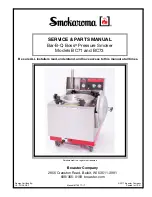
- 33 -
6. Operation
6.1 Functionality of induction cookers
With induction cooker, an electric voltage is applied on a conductor spool beneath the
glass. This creates magnetic fields, which directly heat up the bottom of the cookware
through a physical effect.
This means saving time and energy, because contrary to common hotplates, the
cookware is heated up, not the heating element and the glass.
Due to the technical characteristics described above, another advantage is the very
short start-up cooking time.
In addition, the heat supply promptly adapts to changed settings and can be controlled in
small steps. The induction cooker reacts to changed settings just as fast as a gas stove,
as the energy reaches the pot immediately without having to heat up other materials first.
The induction technology combines this fast reaction with the basic advantage of
electricity, meaning being able to exactly adjust the heat supply.
Additional advantages of an induction cooker:
•
As the cooking zone is only heated up indirectly via the bottom of the cookware,
over spilling food cannot stick. The glass cooking zone is only heated up by the
hot cookware.
•
If the device is turned on and no dish for cooking is present or is removed, a repeating
audio signal will sound and the device will turn itself off after approx. 30 seconds.
•
The device will detect if the appropriate cookware is placed on the heating plate.
If the cookware is not appropriate for induction hotplates, energy will not flow.
The device will turn off after approx. 30 seconds.
•
When operating the cooking zone with empty cookware, a temperature sensor turns
it off automatically.
6.2 Suitable and unsuitable cookware
o
steel or enamelled cast iron;
o
iron, steel or non-enamelled
cast iron;
o
18/10 stainless steel and
aluminium, if it is marked as
suitable for induction (follow the
description of the cookware).
















































